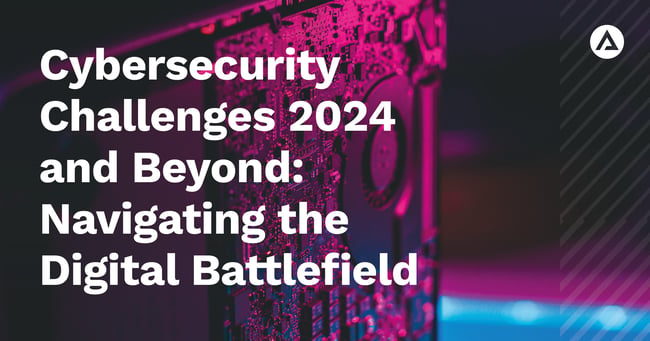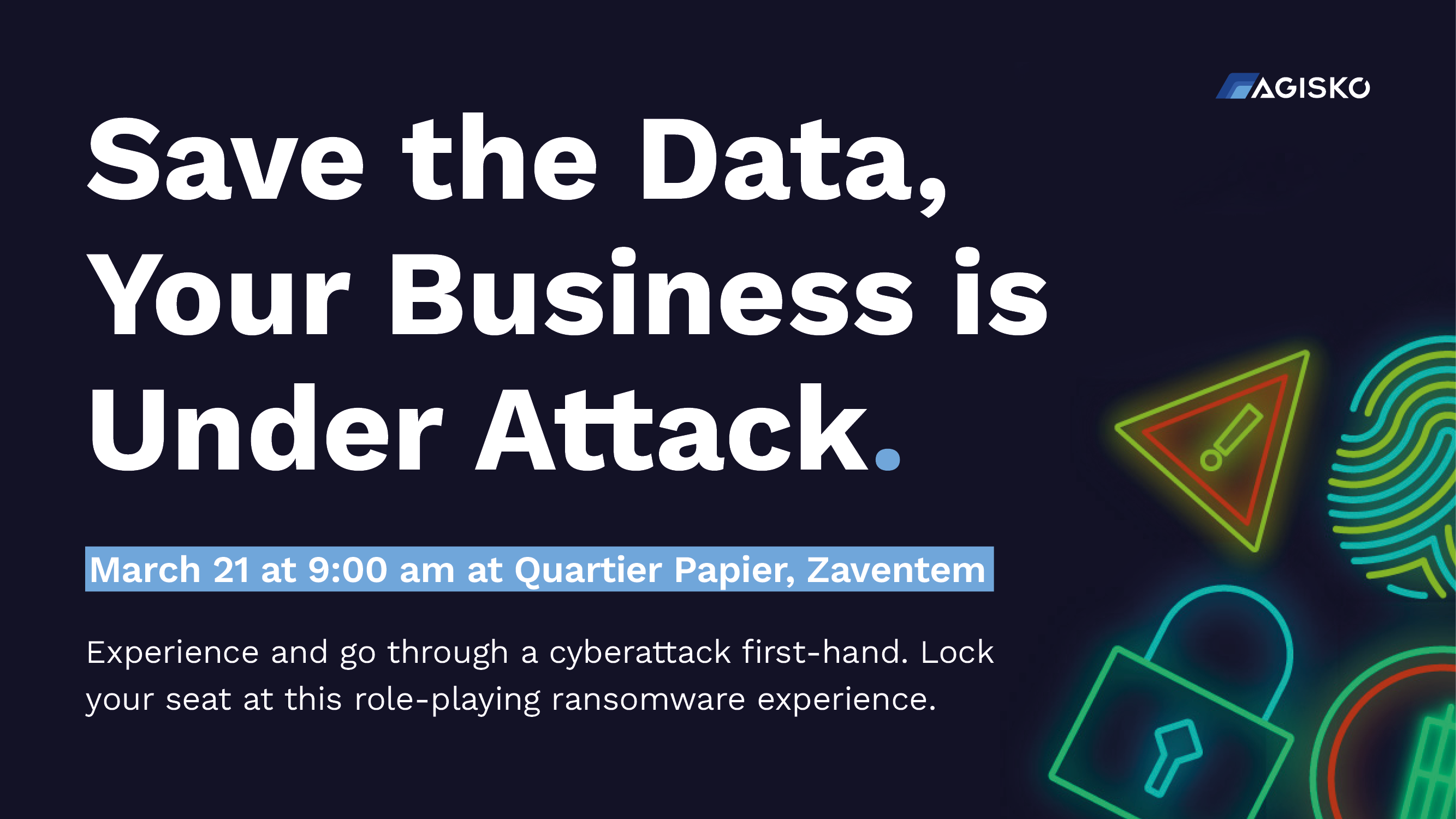In an era of relentless technological advancement, the realm of cybersecurity faces unprecedented challenges. The year 2024 marks a critical moment in time where businesses must confront an evolving array of threats, from sophisticated cyber attacks to regulatory complexities.
This article delves into the twisted landscape of cybersecurity, shedding light on the most important challenges organizations are grappling with and offering insights on best practices for improving mitigation strategies to protect customer data, reduce potential risks and future attacks.
For ease of reading, we've divided the article into three parts:
- Part 1 - Sophisticated Attacks: Unraveling the Complex Landscape
- Part 2 - AI and Machine Learning in Cyber Attacks: The Unseen Adversaries
- Part 3 - Supply Chain Vulnerabilities: Safeguarding the Interconnected Web

Part 1 - Sophisticated Attacks: Unraveling the Complex Landscape
In the constant evolution of the digital age, cybersecurity challenges have taken on a new dimension. Advanced Persistent Threats (APTs) stand as an alarming force, demanding unwavering attention from organizations seeking to safeguard their digital assets.
The Ongoing Arms Race
The cybersecurity landscape is similar to an ever-evolving battleground, with cybercriminals constantly refining their tactics to breach defenses.
Advanced Persistent Threats exemplify this ongoing arms race, characterized by highly sophisticated, targeted, and prolonged cyber attacks. As organizations strengthen their security measures, APTs adapt, emphasizing the need for a proactive and adaptive cybersecurity strategy.
To comprehend the seriousness of APTs, consider them as stealthy adversaries with a primary objective: gaining unauthorized access to sensitive data or systems.
Unlike opportunistic attacks, APTs are meticulously planned, often orchestrated by well-funded threat actors with specific goals, such as corporate espionage or stealing intellectual property.
Real-World Impacts
The impact of APTs extends far beyond the immediate breach. The fallout can be financially crippling, tarnishing an organization's reputation and causing operational disruptions.
The high-profile data breaches of recent years serve as saddening examples, with companies facing not only the financial burden of recovery but also the erosion of customer trust.
The consequences of a data breach are multifaceted, ranging from regulatory fines to potential legal actions. Moreover, the long-term impact of cyber incidents on brand equity can be severe, as customers may migrate to competitors deemed more secure.
In the face of these challenges, organizations must view cybersecurity not merely as a defensive measure to manage risk, but as a strategic imperative for sustained success.
Navigating the Maze of Cybersecurity Challenges
To effectively combat APTs and other sophisticated cyber threats, organizations must adopt a multi-faceted approach:
1. Threat Intelligence Integration
Actively gather and analyze threat intelligence to stay ahead of emerging threats. Understand the tactics, techniques, and procedures employed by APTs to enhance detection capabilities.
2. Zero Trust Architecture
Embrace the Zero Trust model, where trust is never assumed and continuous authentication is the norm. This ensures that even if a breach occurs, the lateral movement within the network is restricted.
4. Behavioral Analytics
Leverage advanced analytics to monitor user and system behavior, enabling the detection of anomalies that may signal an APT's presence.
5. Regular Security Audits
Conduct thorough and regular security audits to identify vulnerabilities and weaknesses. A proactive approach to patching and system updates can significantly reduce the attack surface.
By comprehensively addressing the challenges posed by APTs, organizations can strengthen their defenses and mitigate the potential fallout of a cyber attack.
Join our upcoming event, Save the Data, to feel and experience a ransomware attack first-hand. Seats are limited, so register now to secure your spot. Click here or the image below.
Part 2 - AI and Machine Learning in Cyber Attacks: The Unseen Adversaries
In the relentless pursuit of exploiting vulnerabilities, cybercriminals have harnessed the power of Artificial Intelligence (AI) and machine learning, paving the way in an era of unprecedented threats.
Incorporating AI and machine learning into the cybercriminal arsenal amplifies the complexity of cyber attacks, demanding innovative defense strategies.
The Rise of AI-Powered Threats
As AI and machine learning cease to be mere buzzwords, they have become integral components of cyber threats. Threat actors now employ these technologies to automate and enhance the efficacy of their attacks.
Automation allows for the rapid execution of attacks at scale, while machine learning enables adversaries to dynamically adapt their strategies based on real-time data, making detection a challenging endeavor.
Consider the scenario of AI-powered phishing attacks. Through machine learning algorithms, cybercriminals can analyze vast datasets to craft highly convincing and personalized phishing emails, increasing the likelihood of successful infiltration. This exemplifies the evolution of cyber attacks from simple, manual processes to sophisticated, AI-driven operations.
Defense in the Age of AI
Acknowledging the role of AI in cyber attacks is the first step toward building a robust defense strategy.
Organizations must pivot from traditional, static security measures to dynamic, AI-driven cybersecurity solutions capable of anticipating and countering evolving security threats now.
1. Implementing AI-Driven Threat Detection
Leverage AI to analyze network traffic patterns, user behavior, and system activities. This allows for the identification of anomalies that may indicate a potential threat. Real-time analysis enables swift response to emerging risks.
2. Behavioral Analysis for Anomaly Detection
Utilize machine learning algorithms for behavioral analysis, enabling the identification of deviations from normal patterns. This approach is particularly effective in detecting insider threats and advanced persistent threats that may go unnoticed by rule-based systems.
3. Adaptive Access Controls
Implement adaptive access controls that use AI to assess user behavior and dynamically adjust users' access privileges based on risk assessments. This reduces the likelihood of unauthorized access, even in the event of compromised credentials.
4. AI-Powered Incident Response
Enhance incident response capabilities with AI-driven automation. This accelerates the identification, containment, and remediation of cyber threats, minimizing the impact of security incidents.
Collaborative Defense Ecosystem
The evolving threat landscape necessitates a collaborative approach to cybersecurity. Organizations, industry stakeholders, and skilled cybersecurity professionals all must share threat intelligence to bolster collective defenses.
The creation of a dynamic security ecosystem, fueled by AI, enables swift adaptation to emerging threats, creating a more resilient digital infrastructure environment.
Part 3 - Supply Chain Vulnerabilities: Safeguarding the Interconnected Web
In the intricate web of globalized supply chains, organizations face a new frontier of serious cybersecurity risks and challenges.
The interconnectedness of suppliers, partners, and service providers has created a vulnerability landscape where a weakness in one link can trigger cascading effects across entire industries.
As cybercriminals target the supply chain, organizations must be attentive, strengthening each link to ensure resilience against potential threats.
Interconnected Risks
In the contemporary business landscape, supply chains are no longer linear; they are complex networks with interdependencies that extend across borders. This interconnectedness, while fostering efficiency, also creates vulnerabilities.
Cybercriminals keenly recognize that compromising a single supplier can provide a gateway to infiltrate larger networks, making the entire supply chain susceptible to exploitation.
Example
Consider the scenario of a major data breach originating from a third-party supplier. The ramifications extend beyond the immediate supplier-client relationship, impacting downstream partners and potentially compromising sensitive customer data on a massive scale.
Understanding and mitigating these interconnected risks is paramount to the security posture and the resilience of modern organizations.
Mitigating Cascading Effects
The potential domino effect of supply chain compromises necessitates proactive measures to mitigate risks and fortify the entire supply chain ecosystem.
1. Comprehensive Vendor Assessments
Implement thorough vendor assessments to evaluate the cybersecurity posture of suppliers. This includes scrutinizing their security protocols, data protection measures, and incident response capabilities.
Assessments should extend beyond initial onboarding and be conducted regularly to account for evolving threats.
2. Continuous Monitoring and Threat Intelligence
Establish continuous monitoring systems to detect anomalous activities within the supply chain. Leveraging threat intelligence enables organizations to stay ahead of emerging risks and proactively address potential vulnerabilities before they are exploited.
3. Incident Response Plans for Supply Chain Events
Develop and regularly test incident response plans specifically tailored to supply chain events. These plans should outline a coordinated response strategy to contain and remediate threats swiftly, minimizing the impact on the entire ecosystem.
4. Cybersecurity Risk Management Framework
Adopt a cybersecurity risk management framework that integrates seamlessly with the supply chain. This involves identifying, assessing, and prioritizing risks, implementing appropriate controls, and continuously monitoring and adapting to the evolving threat landscape.
Collaboration for Collective Resilience
Recognizing that supply chain security vulnerabilities will require a collaborative approach, organizations should foster strong communication and information-sharing channels within the supply chain network.
This collaborative effort strengthens the collective defense against cyber threats, creating a more resilient and adaptive supply chain ecosystem.
Conclusion: Safeguarding Tomorrow's Digital Frontiers
In the relentless evolution of security challenges, organizations stand at the crossroads of innovation and vulnerability. The interplay of sophisticated cyber threats, AI-driven adversaries, cloud services, and supply chain intricacies demands a strategic paradigm shift in defense for security teams.
As we navigate the digital battlefield of 2024 and beyond, the key lies not only in strengthening defenses against known threats but also in cultivating adaptive resilience. Through threat intelligence integration, AI-powered defenses, and fortified supply chains, businesses can emerge not just secure but empowered in the face of uncertainty.
Collaboration becomes the cornerstone, a shared defense ecosystem where knowledge flows freely, and collective resilience becomes a force multiplier.
In this era of constant advancement, cybersecurity is not merely a shield; it is the strategic imperative that shapes the success stories of tomorrow.
If you to stay ahead of cyber security challenges, and experience what happens behind the scenes during a ransomware attack, then Save the Data is for you.
You'll get to go through what you need to do if faced with a similar situation in real life. Register here.






